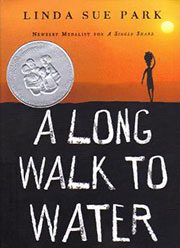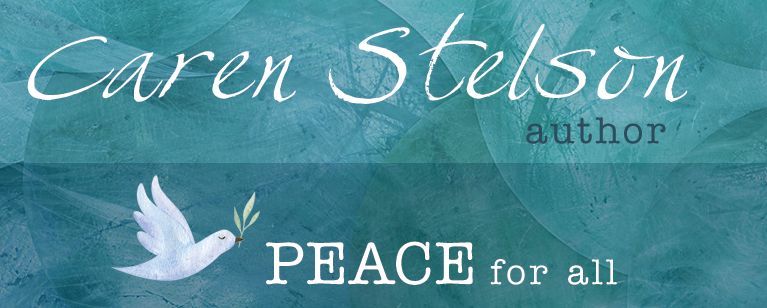
On Wednesday, May 17, I had an author’s experience that turned into an author’s gift. I was invited to Valley View Middle School in Edina, Minnesota, to hear what 7th grade students had to say about my book Sachiko. Valley View media specialist Heather Palmer gathered the 7th graders into the library for our book conversation.
These Valley View 7th graders had been engaged in a literature unit with a focus on Jane Addams Book Awards books, of which Sachiko had been one of the titles. These books meet the Jane Addams Children’s Book Award mission: to recognize children’s books of literary and aesthetic excellence that effectively engage children in thinking about peace, social justice, global community, and equity for all people.” Heather’s literature unit not only encouraged students to discuss their books in groups, but challenged the kids to create a culminating advocacy project inspired by the books’ themes.

I began our book conversation by saying that authors write for two audiences—themselves and their intended readers. I was thinking of middle schoolers as I wrote Sachiko. Middle school is a time of awakening, when young people fully realize life can be fair or unfair, a time when idealism and energy can turn into righteous anger and advocacy. Heather Palmer’s 7th graders were awake and aware.
What did I hear from the 7th graders when they reflected on their reading of Sachiko: A Nagasaki Bomb Survivor’s Story: empathy, critical thinking, a new understanding of history. Students pointed to the specifics of Sachiko’s story:

- Sachiko’s innocence as a child playing outside right before the bomb exploded
- the bullying Sachiko endured—how unfair it was
- the horror of the long term effects of the bomb—burns, radiation exposure, cancer
- the inexplicable wonder that a person can survive a holocaust and not hate or remain angry
- the realization that not everyone agrees with their government’s decisions
- the shaping of propaganda through photographs
- learning that a chain of events can start with one decision then multiply, such as the U.S. decision to drop the atomic bomb and how it led to nuclear proliferation and the Cold War
 As the 7th graders shared their insights, I wondered: Can a children’s book change the world? That’s not my question or Heather Palmer’s question, it was award-winning author Linda Sue Park’s question as she delivered her impressive TED Talk. During her talk, Linda Sue Park speaks of the power of books for young people and the impression these books can make on young minds. Books that take on themes of injustice can help young people “practice life.” Books with certain themes can help strengthen empathy and engagement. Books can lead to advocacy. Park’s book A Long Walk to Water is such a book. It’s about a young Sudanese boy named Salva Dut who survives the long, harrowing march out of war, into a refugee camp, and to a home of peace and safety in the U.S. But the story goes beyond peace and safety. It leads to advocacy, service, and finding a solution to a terrible problem. Salva finds a way back to Sudan to dig wells for clean, life-giving water, and young readers all over the country have found ways to support Salva’s mission. This is amazing. I hope Sachiko’s story can be as inspiring.
As the 7th graders shared their insights, I wondered: Can a children’s book change the world? That’s not my question or Heather Palmer’s question, it was award-winning author Linda Sue Park’s question as she delivered her impressive TED Talk. During her talk, Linda Sue Park speaks of the power of books for young people and the impression these books can make on young minds. Books that take on themes of injustice can help young people “practice life.” Books with certain themes can help strengthen empathy and engagement. Books can lead to advocacy. Park’s book A Long Walk to Water is such a book. It’s about a young Sudanese boy named Salva Dut who survives the long, harrowing march out of war, into a refugee camp, and to a home of peace and safety in the U.S. But the story goes beyond peace and safety. It leads to advocacy, service, and finding a solution to a terrible problem. Salva finds a way back to Sudan to dig wells for clean, life-giving water, and young readers all over the country have found ways to support Salva’s mission. This is amazing. I hope Sachiko’s story can be as inspiring.
In my mind, I keep returning to the question, “Can one children’s book change the world?” I know one book can shift the thinking of a classroom of readers at Valley View Middle School. When young people read a collection of titles recognized by the Jane Addams Peace Association, they are reading books that vicariously help them “practice life.” At Valley View Middle School, you can see this power in the students’ advocacy projects. Linda Sue Park is right. Books can change the world by changing the hearts and minds of the young people who read them.
Click on the link of books that received the Jane Addams Award and be changed, too.
Links:

